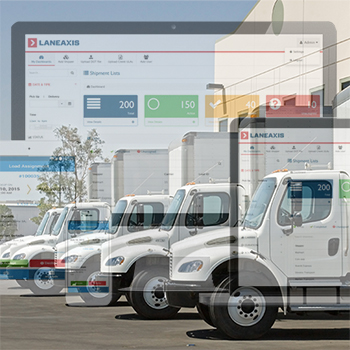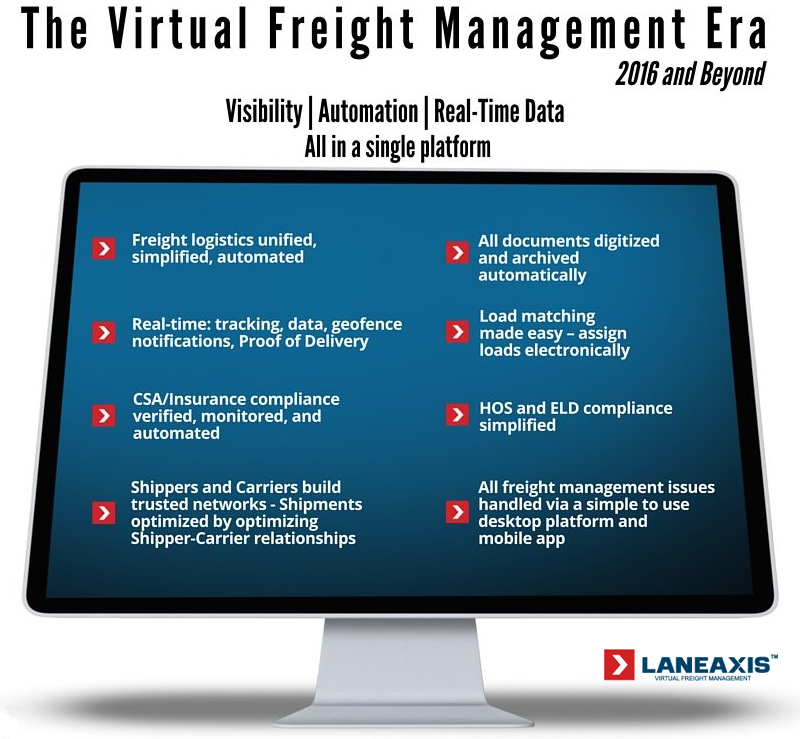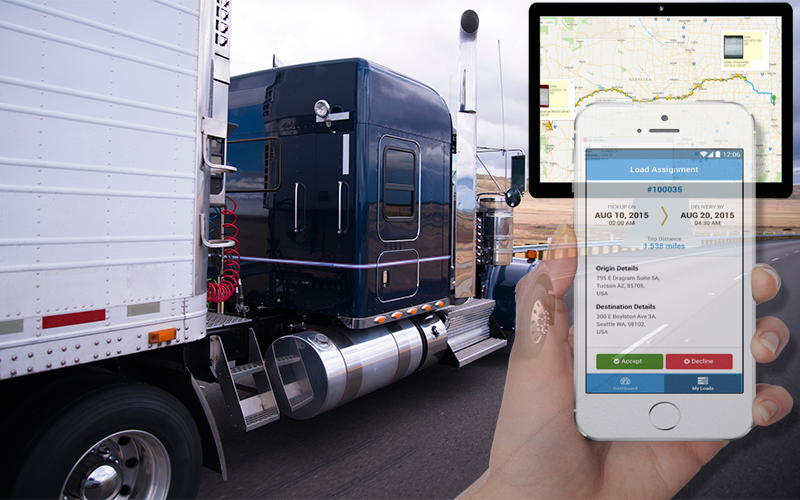3 Big Challenges (& Fixes) For Small Freight Brokers

Transportation logistics is a winding road right now, but by utilizing Virtual Freight Management technology to reduce overhead and operational inefficiencies, small and medium-sized Brokers can quickly be on the road to expansion and rapid growth.
Trucking is Changing at a Dizzying Pace
Automated trucks are on the horizon, ELDs will soon be the law, and a wave of technology is disrupting transportation logistics in ways both positive and perplexing.
The role of the Broker/Third party logistics provider (3PL) in today’s transportation landscape is in flux.
But 98% of 3PLs agree improved data-driven decision-making is essential to long-term success (Source: Supply Chain 24/7).
Here are three major challenges - and potential fixes - facing small freight Brokers today.
1. The Pay Clock: Many small Brokers pay out Carriers long before being paid by Shippers for a completed delivery. This is a cash-flow killer, especially if Brokers are repeatedly raiding reserve funds to cover Carrier payments. It’s not unusual for Brokers to wait 4-6 weeks, or longer, before receiving payment from some Shippers.
FIX: Shortening the “payment clock” is an absolute must for small Brokers trying to grow their business. Requiring advance payment from a Shipper is one way to address this challenge, but that could lead to tension with your customer and disputes down the road. “Factoring” is another option. That’s when a third party advances money to a broker based upon the Broker’s invoice to the Shipper.
Of course, that third party takes a percentage cut off the top. The best way to shave days, and potentially weeks, off your payment time is by submitting Proof of Delivery in real-time. As soon as the receiver signs the POD, a digital version should be sent to all invested parties. The days of snail-mailing PODs are over.
2. Redundant Overhead: Broker dispatch centers are often crowded with staff working phones, emails, and fax machines. Much of that time is spent handling quotes, confirming load acceptance, preparing and transmitting paperwork, and making regular “call checks” to Drivers to locate freight.
FIX: Maintaining this extra staff is a drag, both on finances and efficiency. New technology is designed to automate many of the tasks currently handled by in-house tracking and dispatch teams. Look for true “cradle to grave” solutions that can automate quotes, load acceptance, real-time tracking prior to pickup, and real-time milestone updates all the way through proof-of-delivery.
These were once “people tasks,” but no longer. Small brokers need to utilize technology to streamline staffing and focus on relationship-building.
3. Building customer relationships on a large scale: Most small brokers will only bid on certain freight or lanes when they feel they have a competitive advantage regarding pricing and/or coverage. This is limiting behavior that could restrict the potential growth of a small Broker.
FIX: Large Brokers and 3PLs bid with full confidence, knowing they will always find a Carrier to take a shipment and still clear a profit. Virtual Freight Management tools now give small and medium sized brokerages the ability to compete more equally with bigger logistics players.
VFM gives Brokers the same technical/analytical tools being used by much larger companies to manage capacity, customer commitments, and processes.
Related Article: Virtual Private Network Software-as-a-Service for Third-Party Logistics Providers
Article Topics
LaneAxis News & Resources
Building a Global Supply Chain Network on Blockchain to Connect Shippers Directly to Carriers Blockchain-Based Shipper/Carrier Direct Optimization Platform 3 Big Challenges (& Fixes) For Small Freight Brokers Virtual Private Network Software-as-a-Service for Third-Party Logistics Providers The Electronic Freight Management InitiativeLatest in Transportation
Baltimore Bridge Collapse: Impact on Freight Navigating Amazon Logistics’ Growth Shakes Up Shipping Industry in 2023 Nissan Channels Tesla With Its Latest Manufacturing Process Why are Diesel Prices Climbing Back Over $4 a Gallon? Luxury Car Brands in Limbo After Chinese Company Violates Labor Laws The Three Biggest Challenges Facing Shippers and Carriers in 2024 Supply Chain Stability Index: “Tremendous Improvement” in 2023 More Transportation















